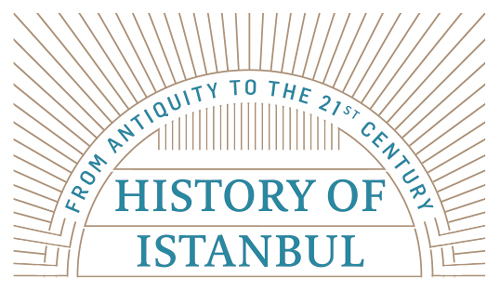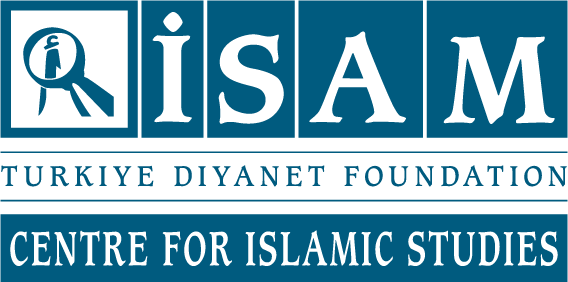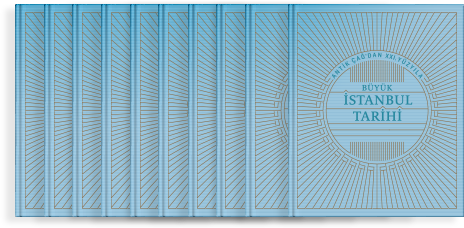THE IDEA OF SOCIAL WELFARE AND ITS DEVELOPMENT IN THE OTTOMAN EMPIRE
The term ictimai muavenet (social welfare), which emerged from the Ottoman waqf system and took shape during the era of Abdulhamid II, began to take up its modern content after the declaration of the Second Meşrutiyet (Constitutional Period); it was at this time that this term can first be encountered in the literature. This term certainly differs from the social aid which was commonly referred to in the past, as well as from today’s understanding of social aid, which has a wider field and which is a product of the welfare state. However, the basic objective in both the past and today is to help individuals, or those who are dependent on a certain individual, with official, semiofficial and voluntary foundations that provide aid in the form of finances or services. The individuals who are generally the recipients of social aid are basically the poor or destitute. Also it should not be forgotten that the understanding of poverty changes in conditions created by environments of war or peace, nor should the fact that social welfare forms according to changing conditions be overlooked.
Despite the industrial development in the Ottoman State, the changing social balance that triggers urbanization was not experienced. Society was generally an agricultural society, there was domestic solidarity and with sadaka (charity) and zakat (charitable tax) acting as a supporting structure, society was able to gain strength from a unique understanding of the charitable waqf and imaret (soup kitchen) system. Classic operations began to unravel with the dissolution of the waqf system; it was now necessary for the state to have a direct voice in implementations for the poor. More precisely, the regulations introduced in the Tanzimat era gave the state the opportunity to enter the field of social welfare; the central state treasury, which began to take shape from the end of the 18th and beginning of the 19th century, paid a pension to the poor. This pension, transferred to those who had fallen on financially difficult times, had earlier been provided by the waqf, but in later eras, particularly during the period of Abdulhamid II, the muhtacîn (needy person) pension, seen to be an important source for the poor, became prevalent.
Not only did Abdulhamid II continue the practice of previous sultans, distributing atiyye-i seniyye (annual gifts) and sadaka-i seniyyeler (annual charity), he changed the amount of firewood and coal that was distributed to the people of Istanbul during the winter months. In 1882, 33,528 kıyye (1,300 grams) of coal was distributed to the people in the name of the sultan; in subsequent years similar practices continued. During World War I this policy, which had previously been implemented by the sultan, was further developed by the Istanbul Municipality; in order to stop the shopkeepers of Istanbul taking advantage of the people, coal and firewood were distributed well below the market price. A similar implementation continued at the end of the war. The harsh winter at the beginning of 1922 meant that those who were received an eramil ve eytam (widows and orphans) pension were prioritized in being given fuel at cheap prices.
With the 1894 earthquake, the understanding of aid provided by the state took on a new dimension. Following the earthquake, not only were the spouses and orphans of those who had died in the earthquake given a pension, a charity campaign that was exemplary for aid campaigns in Istanbul, which were frequently held after the Mudros Armistice, was conducted; in five and a half months 82,874 Ottoman gold coins were collected.
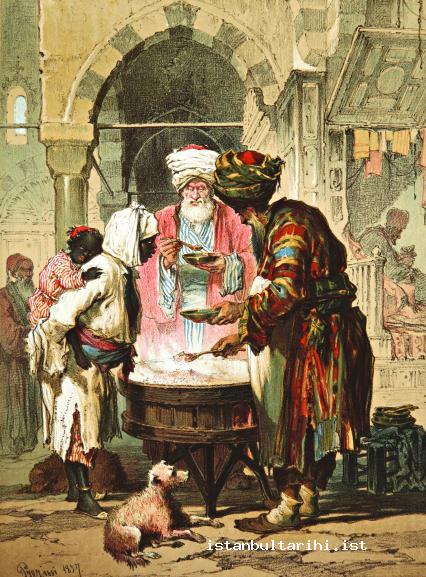
Abdulhamid II made considerable headway in providing aid for the poor as compared to his predecessors; social welfare foundations, such as the Darülaceze and the Darülhayr-ı Âlî were opened. These institutions would form examples for future implementations. Following Abdulhamid II, who had managed to solidify his power in this way, the İttihat ve Terakki (Union and Progress) Party tried to eliminate his influence; the İttihat ve Terakki Party perceived the activities that were seen as reinforcing the power of the sultan as a duty of the state. The names of the institutions that the sultan had established were changed, and the İttihat ve Terakki Party tried to increase their political influence through charitable societies and semi-official associations. This new approach, rather than reflecting Abdulhamid’s Islamicism, was a unifying state ideology that included loyalty to the homeland and which reinforced the idea of obedience. After the Balkan Wars this view was strengthened even further with aid campaigns that were organized based on nationalist themes.
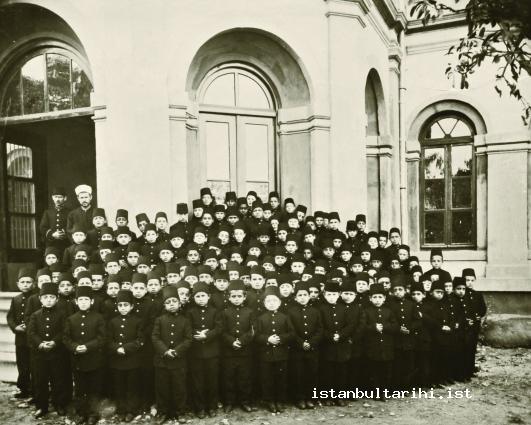
The İttihat ve Terakki Party, which closed down any institution identified with the sultan, put an end to many implementations, while also beginning a number of social charity implementations in the modern sense. In this respect, their first significant work was to establish the Müessesat-ı Hayriye-i Sıhhiye (health care foundation) administration; all the charitable and health institution in Istanbul were gathered under this foundation. While the Darülhayr-ı Âlî, the first important welfare organization, was abolished in 1909, the Darülaceze was affiliated with the Müessesat-ı Hayriye-i Sıhhiye. In 1910 a regulation was enacted to carry out the payment of pensions for the needy person according to certain criteria. There were twenty imarets which were under the control of the Evkaf Nezareti (Ministry of Poundations); most of these were no longer carrying out their basic functions and in 1911 all but two were closed.
The fact that with the outbreak of World War I the routine of everyday life had been seriously upset led to the determination of new policies. While the state was forced to become more involved in the field of social welfare, particularly towards the end of the war, at the same time the cemiyet (associations) became effective. With an unprecedented diversity and dimension, voluntary charitable activities were organized. Istanbul, which received floods of emigrants and refugees, played host to a large number of widows, orphans, victims of disasters and people in need; that is, it took on the nature of a city in which there were groups with a right to social aid.
The first significant step to give aid to these groups that were dependent on the patronage of the state was taken in Istanbul after the signing of the Mudros Armistice; this was the establishment of Muavenet-i İctimaiye Müdüriyeti (Directorate of Social Welfare). This development, which was important in the process of institutionalization, cannot be claimed to be a blind imitation of western models, even if the occupation forces had a certain influence. Moreover, even if not openly stated, begging and prostitution both played an important role in organizing social welfare; the schematics of the social welfare organization were determined by the unique texture and existing conditions of Istanbul at that time.
In 1918 the Muavenet-i İctimaiye Müdüriyeti further developed the system of reports that classified poor people and those who required assistance which had been implemented earlier by the municipality of Istanbul; thus a very successful program which included the concept of social welfare was prepared. In Ankara the newly established government implemented this program until the proclamation of the Republic. In the program, while refugees, orphans, yangınzedeler (those left homeless due to fire), beggars and prostitutes were all groups considered to be entitled to social assistance, organizations like darüleytams (orphanages), darülacezes (poor houses), social welfare institutions, associations that tried to prevent begging and prostitution, as well as the Hilal-i Ahmer (Red Crescent) and Himaye-i Etfal (children’s protection association) were classified as voluntary welfare organizations.
The source for the expenditures on certain groups consisted of shares from the state budget and, perhaps even to a greater extent, of donations and revenues derived from organizations. In 1901 the Cem‘-i İanat Kararnâmesi (resolution on the collection of aid) was issued in order to secure a certain standard and to control charitable campaigns. Many theater performances were organized; in addition, badges and stamps were sold and football matches were held in Istanbul. Such activities were given permission as long as they were in keeping with the resolution. In order to further increase the donations of charity campaigns, such events would be held during the first days of the ‘Eid ul Adha and ‘Eid ul Fitr, the birthday of Prophet Muhammad, the proclamation of Second Meşrutiyet on 10 July, and to coincide with the sultan’s accession to the throne. The women, and more particularly, the students of the Darülfünun, were brought together by the associations in Istanbul and were active members in the campaigns. In 1919 the Darülfünun students went into action to help immigrants and refugees; they went to important centers of Istanbul and entered every area or establishment from which they could receive donations.
GROUPS ENTITLED TO SOCIAL WELFARE AND RELEVANT ORGANIZATIONS
Beggars, Vagrants, and the Darülaceze
Beggars, who were effective in the creation of the important social welfare foundation the Darülaceze, were the first group of urban poor to be defined. Although begging was not approved of in the Ottoman era, it was not prohibited; all the same, over time steps were taken in order to prevent begging. The control mechanism set up by the Seele Müdürlüğü (Directorate of Beggars), cerr (para) kâğıdı (begging paper), was introduced. Beggars without the cerr document, which gave them the right to beg, would be punished with penal servitude on galleys or banished from the city. The penal system at the end of the 19th century became more humane and civilized; beggars were made to work and those who did not find work were sent back to their hometowns.
On 31 January, 1896 a decree that prohibited begging in Istanbul was issued (Tese’ülün Men‘ine Dair Nizamnâme); this accelerated the process of establishing the Darülaceze, and the construction which had begun 10 November, 1892 was completed on 31 January, 1896. According to the Darülaceze Nizamnâmesi, residents of Istanbul, be they immigrants or previous Istanbul residents, the sick, injured, those with no families, those who were unable to work, as well as orphans were all to be taken in by the institution. If one wanted to adopt a child, they could adopt anyone from among the orphaned children, including young ladies in exchange for a senet (promissory note). Widows could be employed in cleaning, and were given a salary or they could marry if they so desired. However, the Darülaceze was an institution for people from Istanbul and was not a suitable place for those who came from the countryside.
The first residents of the Darülaceze, were the orphans and widows from the Kırmızı Barracks (the Edirne Topçu Barracks, built in 1816, was used as a dormitory for orphans) and from Haseki Nisa (women’s) Hospital (this hospital was built in the name of Hürrem Sultan, and became a women’s hospital in 1881). Haseki Nisa Hospital was not only a hospital, it also operated as a poorhouse that sheltered and fed widows and orphaned children. When the residents of the hospital were transferred to the Darülaceze, not only did Haseki Nisa Hospital return to its original function, but many needy people were able to be settled in the Darülaceze, one of the best and most modern foundations of its era, and here began to live a more comfortable life. Immigrants who were in Gülhane and those who migrated at the end of the 1877-1878 Ottoman-Russian War and sought shelter in the Kırmızı Barracks were taken into the Darülaceze.
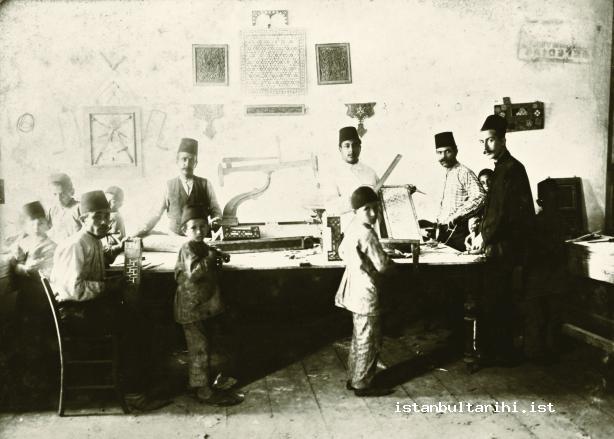
The main idea behind the Darülaceze was not to create a shelter. The people who came here, no matter what their age, were given education, put to work in the workshops that were opened here, and contributed to the production. In addition to the workshops, the institution consisted of an ırzâhane (nursing home - a place for infants), known as the Istanbul Darülacezesi Süt Çocukları, an orphanage, the Darülaceze Mekteb-i İbtidaîsi (primary school), Dilsiz ve Âmâlar Mektebi (school for the deaf and blind), a women’s hospital and a men’s hospital, as well as other health facilities, places of worship, laundries, and two hamams, one for women and one for men.
Although the Darülaceze was a modern foundation, it was not sufficient to solve the begging problem in Istanbul. Moreover, being a resident of Istanbul was a basic condition for being admitted into this institution. However, the number of provincial beggars in Istanbul was very high. Since it was not possible to send them back to their hometowns immediately, they had to wait as a guest in the Darülaceze for some time until the means to send them back home could be found. Upon finding the necessary means the provincial beggars would be sent outside the city by the Istanbul Municipality. Despite the continued insistence that the Darülaceze institution did not accept beggars from the provinces, in 1924 it was determined that only 10% of the residents of the Darülaceze were from Istanbul.
The Darülaceze was not the institution of choice for people who made a living by begging. Many wealthy beggars fled out of fear of being placed in the Darülaceze. In this matter the following passage taken from Ahmed Rasim’s work Şehir Mektupları is worth examining:
Indeed, I have been thinking where are these poor people who make a living by begging, people who make us uncomfortable. It seems that every one of them has become a tradesperson...! In fear that they will be apprehended by the police and taken to the Darülaceze they have placed ten or fifteen wax wicks on a small candle box, and sit at the head of the street. Have you seen them? Merchants of ideas..! If a little more pressure is put on them, perhaps each one will become a corner moneychanger...!
The situation of the ırzâhane, the section for infants, worsened over time. In the first year of its establishment even the smallest detail did not escape attention, and many implementations were carried out according to modern standards; however, with the advent of the war years it was not possible to even find a doctor to check the health of the new-born babies. Due to neglect and undernourishment, the death rate reached 70-80%. The fact that of the 4,585 children taken in between 1903 and 1936 2,360 died is significant in demonstrating the poor conditions of this institution.
When considering the Darülaceze as an orphanage, the ever-increasing number of homeless children, particularly after the First World War, in Istanbul meant that this institution came onto the agenda; this was mainly due to a lack of corporate structuring for maintenance and due to events that occurred outside of the institution. There was a great demand that the Darülaceze accept children, who demonstrated the pre-determined qualities, but most applicants were not accepted; only a small number of children were accepted, and this was only with pressure from the upper echelons of the state. As those students who had to be accepted were almost all ill they had to spend ten days in quarantine and receiving medical treatment before being accepted into the orphanage.
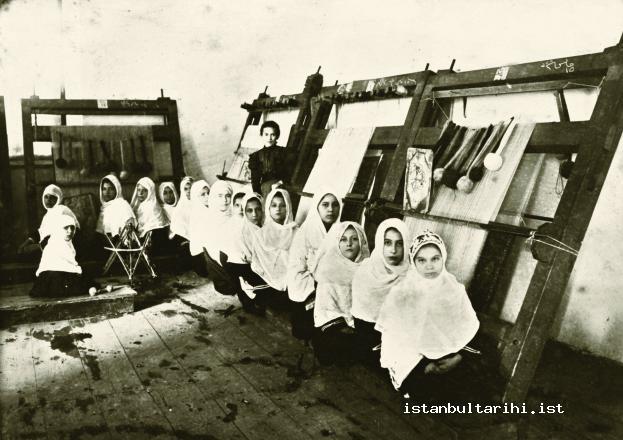
Vagrants
The vagrants who were included in the social welfare groups came onto the agenda after the Second Meşrutiyet. The term vagrant was a broad term that could be used for just about anyone, including beggars, loafers, those who were untrustworthy, those who were known at this time as mazanne-i sû’ (people who were thought to pose a threat) and those who did not work. The perception that rights and freedoms could be pursued without limitation, which accompanied the proclamation of the Second Meşrutiyet, led to confusion within the society. The uncontrolled situation, strengthened by the prevailing chaos and a lack of authority, was worsened with the pardon of incarcerated criminals; people convicted for fraud, theft, pickpocketing and the like were released, leading the situation to spiral out of control.
In the middle of this turmoil, in accordance with the Mazanne-i Sû’ Nizamnâmesi (Decree on Suspected Criminals 1909), it was thought that this flaw in security could only be overcome by removing the criminal elements from the streets of Istanbul; as a result, the beggars and vagrants were divided into two groups. While one group was taken into the Darülaceze, those who had come from the provinces were sent back to their hometowns. Vagrants were immediately exiled from the city, and information on this matter was sent to the provinces from which they came to prevent them from returning to the city. It was even demanded that these people not be allowed to travel from their hometowns to ensure that they did not return to Istanbul. Thus, in order to ensure security in Istanbul, the provinces came face to face with similar problems; it was for this reason that the local administrations acted reluctantly in accepting vagrants and finding them employment.
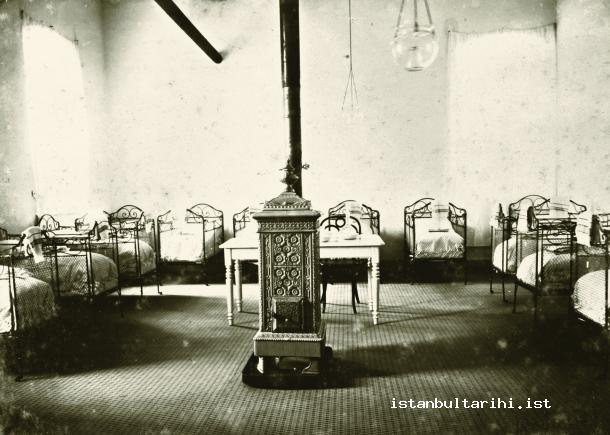
Vagrants were a matter that frequently came onto the agenda in Istanbul during the Mütareke (a period from 1918-1922); following the declaration of the Second Meşrutiyet similar situations appeared once again. In 1922 the workers and farmers who came to Istanbul wandered around the city, unemployed and idle; in addition to complaints about their carousing in the streets at night, people were made uneasy when they used firearms to “stir things up” and played music in the streets. In particular, the local authorities, police and gendarmerie were kept busy by these people, especially with the large influx from Albania and the Laz region (southeast coast of the Black Sea).
Children Beggars and Vagrants
The most important section of the beggar and vagrant flocks consisted of children; in 1838, in order to care for and educate children who were wandering the streets, it was decided to open two boarding gureba schools in Istanbul; however this decision could not be implemented. Some of Istanbul’s children gangs had become infamous at this date. Between 1883 and 1884 the Pıtır Ali gang and between 1908 and 1909 the Parlak Joze gang can be mentioned in this context. These gang, which included boys between the ages of 13 and 15, organized those who were without employment and vagabonds; this situation continued without change during the years of the First World War. For example, an article in the June 10 1917 issue of Sabah reveals the naked truth of the situation:
A foreigner related the following observations to us. In one of the busiest spots in Beyoğlu, a six-year-old girl was sitting on the stones with an eighteen-month-old child on her lap. A lady from a respected family observed the child’s state with a motherly look; she saw that the child was wretched and on the point of starvation. She wanted to take the child to a dairy-shop in order to relieve his hunger. However, the small girl violently tried to prevent this undertaking. She cried, shouted and bit the hand of those who wanted to help the boy, and the lady, unable to help, became angry and ceased to interfere. The same person stated that she had seen a man in the backstreets of Beyoğlu who was well-dressed, but who had a treacherous countenance; this man was surrounded by children beggars. He took the money out of their hands and treated them badly.
In the Mütareke Period, with the aim of not only taking begging and vagrant children under control, but also to protect them and introduce order into their lives, the Men‘-i Tese’ül Cemiyet (Society for the Prevention of Begging) was established; by 1924, 998 children had been prevented from begging. In order to educate these children, the Saadet Mektebi (Felicity School) was opened in 1921. In addition to the school in Şişli, there was a branch in Hasköy for Jewish children, and one in Beşiktaş to teach between 120 and130 Jewish and Greek children. However, it is not possible to say that this institution was a school in the absolute sense of the word. The institution was established in order to undertake the education and protection of orphans in Istanbul and surrounding areas, children who had no choice but to spend their lives begging. In addition to theoretical education at the school, cobblers, blacksmiths and tinsmiths would instruct the children in a form of career training; at the same time some children were sent to work in certain factories and workshops.
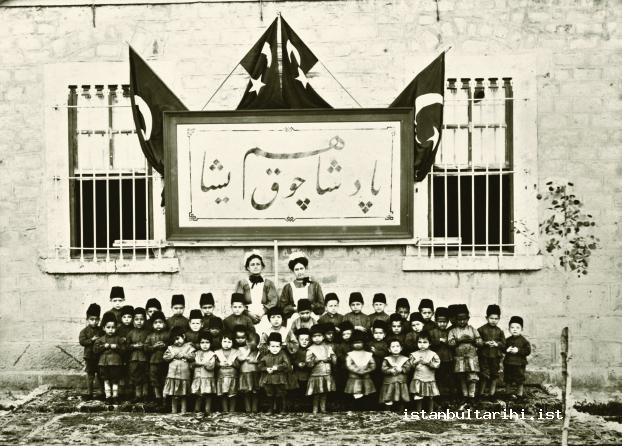
In addition to the Men‘-i Tese’ül Society and the Saadet School another section that was related to the education and care of vagrant children was created; this was the Darülıslah (Reform school). The priority in this institution was to provide moral education; at the same time the children would learn crafts, and would be provided with a background that would allow them to earn a livelihood. In keeping with this objective, the children were apprenticed to tailors, cobblers and leatherworkers in Beyoğlu; the masters were to keep an attendance record for the children.
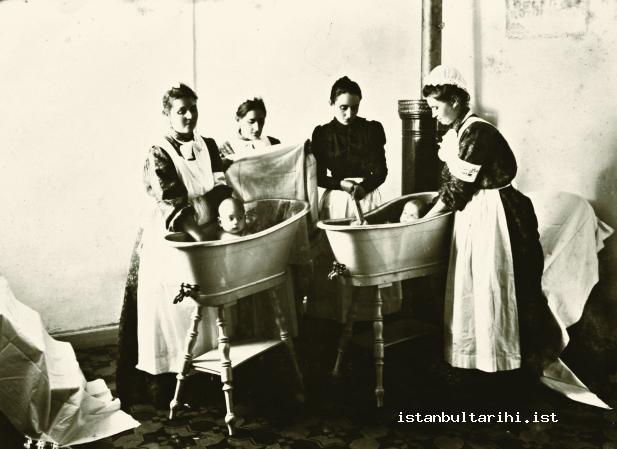
The Men‘-i Fuhuş (prevention of prostitution), established as part of the Beyoğlu Mutasarrıflık (office of the lieutenant governor) took on the education of prostitutes, who were included in the category of vagrants. The main aim was to protect women and young girls who could be drawn into prostitution and to educate them in the reform schools that had been opened to this end. At this time girls as young as 13 could be involved in prostitution; through the efforts of this institution girls were allocated to the Kavecibaşı Manor in Beşiktaş. Here girls aged between 13 and 20 stayed and were taught the skills involved in dressmaking, handicrafts and weaving. However, according to news sources on the subject, the aforementioned mansion was not used for this purpose; rather 40 girls who had been dragged into prostitution were brought together in another building.
Orphans, the Darülhayr-ı Âlî and Darüleytamlar
In Ottoman society, children who were orphaned would generally be looked after by relatives or by families without children, thus not being distanced from the family environment. For this reason, it was not until a late date that the concept of an orphanage came into being in Ottoman society; the first structure that can be considered to be the leading orphanage model was established after the Ottoman-Russian War (1877-1878). This war, which changed the traditional perception, as well as the wars that followed, led to mass migrations; as a result of these migrations the number of orphaned children who were dependent on the patronage of the state increased.
After the Ottoman-Russian War of 1877-1878, in order to educate and protect children who fulfilled certain specifications, children were not only placed in the Darüşşafaka, but also a large number of children were placed in trade schools, or in secondary boarding schools or high schools, without fees. A resolution passed in 1868 ensured that the quota set aside for orphans continued to exist in trade schools for many years. In particular, the activities towards this end increased a great deal after the Balkan Wars. According to Yakub Kadri (Karaosmanoğlu), the number of children who were boarding and studying in these schools reached between 15,000 and 20,000.
Even though the function of the said schools was that of an orphanage, in essence they were educational institutions. The Darülhayr-ı Âlî, established on September 1, 1903, was first created as an orphanage. The Darülhayr-ı Âlî used the Zeynep Hanım Mansion; this building was now transformed into an orphanage that acted as a trade school for vagrant children and children in need. The school, which took in children between the ages of five and seven, provided seven years of education. However, not only was the school not properly equipped, no workshops were established, nor were any qualified teachers appointed. As a result, the school did not function and was closed on August 21, 1909.
The darüleytams were orphanages based on the model of the Darülhayr-ı Âlî; this was an indication of the changing phenomenon of orphan children in Istanbul. Muslim-Turk orphanages were usually known as darüleytams, while orphanages allocated for non-Muslims were referred to as eytamhane. Even though the darüleytams established immediately after the Balkan Wars were closed shortly afterwards, they were reopened during the years of the First World War and remained open until 1926.
The first Istanbul darüleytam was opened in Kadıköy on October 25, 1915; this was followed a year later by Istanbul Bebek Girl’s School, the Galata Trade Branch, the cobbler school in Kadıköy and the Yedikule Trade darüleytam. İsmail Mahir Efendi, known as “the father of orphans”, the member of parliament from Kastamonu and the first general manager of these schools, was effective in this increase in schools which took place over such a short period of time. The buildings selected for the darüleytams were generally orphanage buildings belonging to foreign states which had been vacated at the start of the First World War. The darüleytams took children of parents who had died or been injured during the war as well as migrant and refugee children; second in priority were those who were in need or homeless. Even though there were efforts to adhere to these priorities, from time to time they would change.
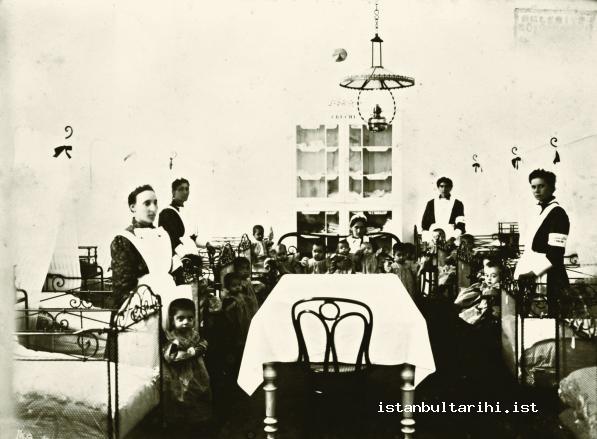
After being opened in Istanbul, within a short time a darüleytam was opened in nearly every Anatolian province. From June 1917 on, there were 49 darüleytam branches with 11,600 students within the borders of the country. This increase in the number of branches came to a halt with the end of the war. The darüleytam branches in the provinces, with the exception of Edirne and Bursa, moved to Istanbul. The darüleytams not only were a burden on the state budget, the poor quality of education, the problems in supervising the children, epidemic diseases and health problems brought about by excessive overcrowding and the physical inadequacy of the buildings were just a few of the reasons that this move was made.
In the scope of the transfer operations that took place in the first months of 1918, those children in the provincial darüleytams who had guardians were delivered into their guardians’ care; those who had no one but the state to look after them were transferred to Istanbul. However, although the numbers of children were known before the move, as the records had not been well kept, accurate figures on how many children had been brought to Istanbul were not produced. Not only was the fate of those who were left behind unknown, the disinterest in keeping records continued to increase the weakness in inspections after the move. The population of the darüleytams at the time of the signing of the Armistice of Mudros was estimated to be 8,000 children; in 1920 this number had dropped to 3,000. In the same year the Kadıköy, Bebek and Galata branches were closed, and five branches, consisting of the Validebağı, Çağlayan, Halıcıoğlu, Balmumcu and Beykoz branches, remained.
In the context of organization, the limitation of the darüleytams, with the aim to bring the institutions under one roof, became intensified; it was decided to organize the Validebağ Pavilion to this end. The Pavilion would be developed with extensions and all the orphans - girls and boys – who were located in different branches would be brought here. This decision, taken at the end of 1920, began to be implemented in 1922. However, the fact that the Istanbul Government started to intervene at this date meant that the TBMM Government (Government of the Grand National Assembly) started to take an interest in the matter. In terms of social welfare applications, the TBMM government followed the Ottoman period and continued to act in the same manner on this issue; they proposed gathering all of the children in the Bigados (Selimpaşa) village. Indeed, some of the boys were settled in this village. However, with the proclamation of the Republic, different policies were developed and the existing orphanage organization was abolished with a law in 1926.
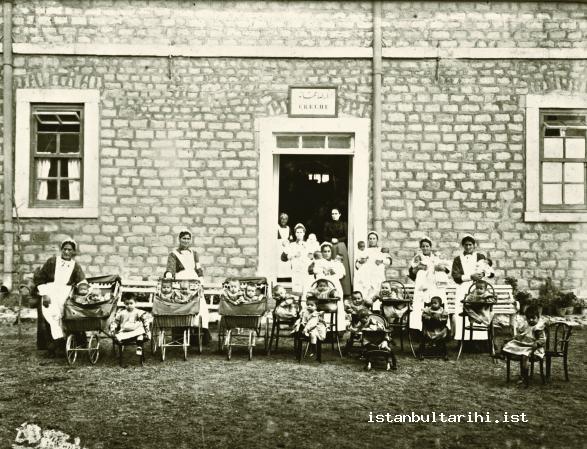
As with the trade schools in Istanbul’s darüleytams, education that was primarily technical, including carpentry, tailoring, cobbling and blacksmith skills was given; in the discourse of this era, it was important for the children to be given education in craft/industry. In order for boys to be able to stand on their own two feet after leaving the darüleytam, the children were instructed by master craftsmen in the workshops, learning carpentry, blacksmith skills and cobbling; the girls were given home-making skills and were encouraged to make good marriages. There were quite a large number of girls who were not brought to Istanbul during the move; it is known that they were adopted by local “good families”.
Apartments for Yangınzedeler (those left homeless by fire) and Harikzedegân (those injured by fire)
In the words of Osman Nuri Ergin fires broke out when the season for “fried eggplant” arrived. The only way to protect Istanbul from the fires that sprung up one after another was to establish a strong fire department; however, this had to wait, if one can forgive the sentiment, until the occupation of Istanbul. Wooden constructions, narrow streets, scarcity of water, ignorance and carelessness were just some of the reasons for fires; after every fire implementation which had now become classic were carried out without care. Before the fires had been extinguished, albeit with primitive methods, a commission would be set up to coordinate the work that had to be carried out. The commission undertook trying to resettle those left homeless by the fire, trying to find any place they could rest their head, and in conjunction with this, a relief campaign would be started. The Hilal-i Ahmer (Red Crescent) Society would set up a kitchen at the scene of the fire, and it would also meet some of the other needs of those left homeless by the fire.
Between 1856 and 1921, of the 291 fires that took place, the Hocapaşa Fire (1865) and the Great Fatih Fire (1918) stood out due to the effect they had. The Hocapaşa fire, which caused destruction to the areas of Cağaloğlu, Kadırga and Kumkapı, was ultimately significant due to two developments. The first was that the nests of bacteria that had led to the cholera epidemic which had been sweeping Istanbul until that date were destroyed and the epidemic came to an abrupt end. The second was the establishment of the Islahat-ı Turuk Komisyonu (Commision for the Improvement of Infrastructure), which introduced urban development in the areas that had been destroyed by the fire; the works carried out by this commission in the aftermath of the Fatih Fire created an example for future work.
In the aftermath of the Fatih Fire an unprecedented social solidarity was experienced; the residents of Istanbul participated in provision campaigns on a wide scale, and the large amount of money that was collected was deposited into the İtibar-ı Millî Bank. However, after the occupation of Istanbul, when the occupation administration wanted to appropriate the money, the construction of the Laleli Harikzedegân began. Making inexpensive and sanitary homes, resembling European social housing, groundbreaking applications in construction were made in Istanbul.
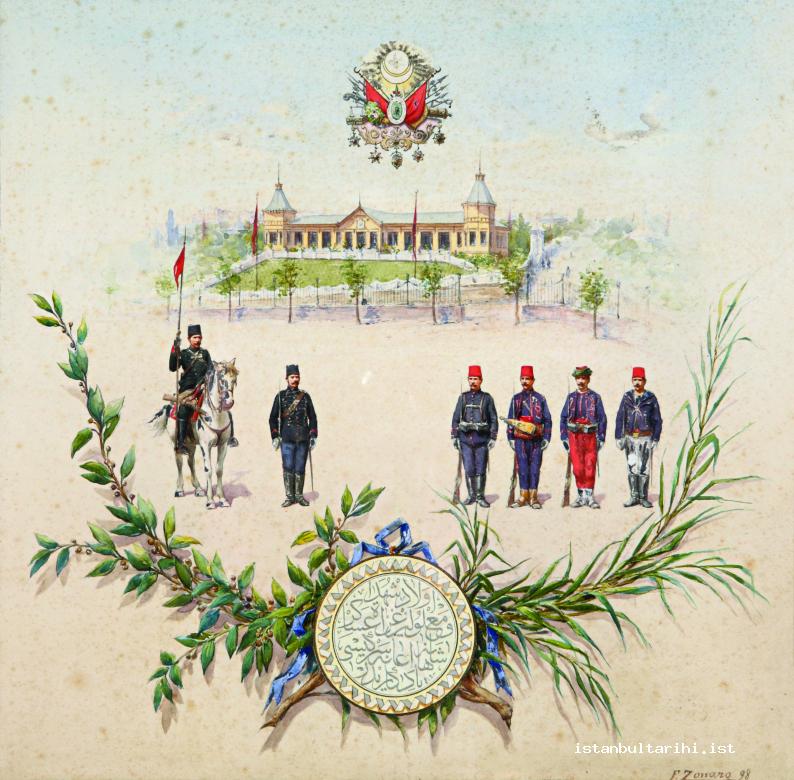
The location of the apartments was to be Laleli, where a few huts had been set up to house those left homeless by fires. Starting with a decision taken in the summer of 1920, the first two blocks of the 120 planned apartments over 4 blocks were completed in the summer of 1922. These apartments, which had the luxury of being able to provide the essential needs of fresh air, electricity and water, were rented out at rather high prices, decided in the manner of an auction. The tenants of the apartment, who were members of the “polite upper class” of Istanbul, even included members of the Senate. Thus, these apartments were far removed from the original objective and it was not possible for those who had been left homeless due to fires to benefit from the apartments that had been built for them. Even years later, due to the fact that there was a lack of housing, many homeless people tried to carry out their lives in Istanbul’s mosques and schools, supported by government aid and charitable agencies.
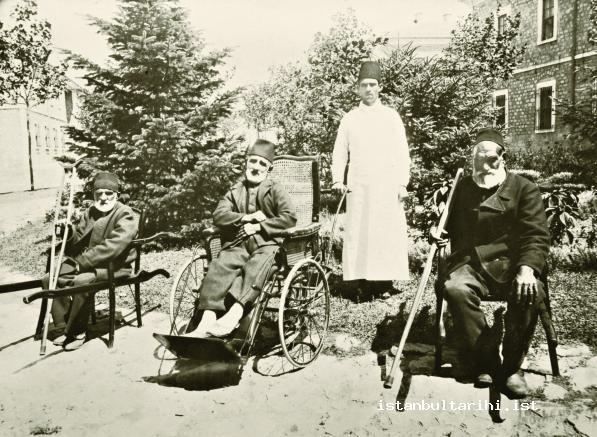
Refugees and the Charities that Supported Them
The wide scope of the terminology related to immigration and immigrants is an indication of the importance of immigration in the life of the state and society. In general, the term muhacir (immigrant) was preferred, however in official documents the term mülteci, üserayı muıhacirîn, istilâzede, felaketzede, ev göçü and mübadil were used to refer to immigrants; Istanbul was always a magnet for such people. At this point, it should be mentioned that the term mülteci (refugee) started to be used in a different way during World War I. The movement that started with the Russian invasions of the Eastern Anatolian region was referred to as an internal immigration, and the immigrants who were moving towards safer areas were referred to as mülteci (Vilayat-ı Şarkiye Mültecileri -refugees from the Eastern Province). It is necessary to state that a large number of these refugees came to Istanbul.
The wave of immigration that occurred after the 1877-78 Ottoman-Russian War was an important test for Istanbul. This was followed by another wave of immigration after the Balkan Wars. The defeat in the war, which started in October 1912, occurred in November of the same year; this was followed by a wave of immigrants to Istanbul. The cholera epidemic that broke out led to 20,000 people losing their lives. The efforts of the mayor, Cemil Bey (Topuzlu), led to the city being cleansed, and the Hilal-i Ahmer not only gave priority to services in the district, but also opened hospitals in Yeşilköy, Küçükçekmece and Hadımköy. These implementations which were directed towards the immigrants were a rehearsal for the large wave of immigration that occurred during World War I.
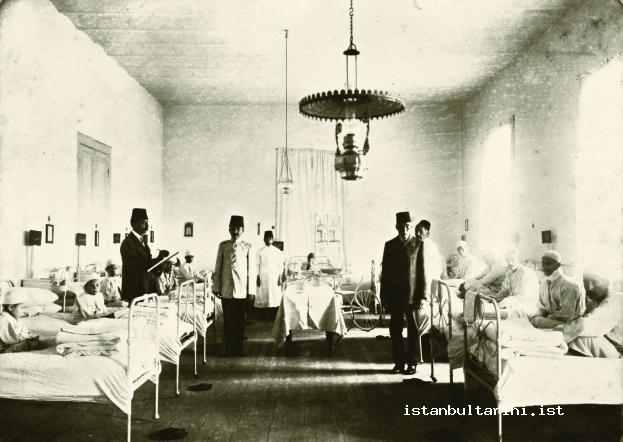
After the war Istanbul received the immigration that had occurred after the Greek invasion, which had begun in İzmir and spread throughout Western Anatolia. Thus, the Vilayat-ı Şarkiye refugees of Istanbul were joined by groups of immigrants that came from the Caucasus and the Balkans. In 1919 Istanbul, a magnet for probable immigration, was not only proclaimed “a forbidden zone” for immigrants, the immigrants living in the city were divided into two, those who were allowed to live in the city, and those who were not allowed to remain here.
Even though large epidemics, of a deadly and destructive scale, were not the results of the large number of immigrants and refugees, the health checks, preventative medicine and food donations carried out by official institutions as well as volunteer institutions were effective in preventing such outbreaks. Alongside the Muhacirîn Müdüriyeti (Directorate of Immigrants), the greatest supporter of such efforts was the Hilal-i Ahmer. The immigrants were taken under control in the lodgings of the Muhacirîn Müdüriyeti in Gülhane, in the huts in Beyazit, the tekkes and madrasas in Eyüp, the soup kitchens in Hasköy and Cerrahpaşa, and in predetermined zones in Beyoğlu. Including the determined zones, there were 38 zones in which the immigrants and refugees lived, and some bakeries were designated for their habitation. In time the number of immigrants fell, and as a result, the number of guesthouses also fell. From March, 1923 on, there were 1,342 immigrants living in the guesthouse in Gülhane; these consisted of mostly people from Yemen and Albania. During this period many of the people who had not returned had managed to establish their own lives.
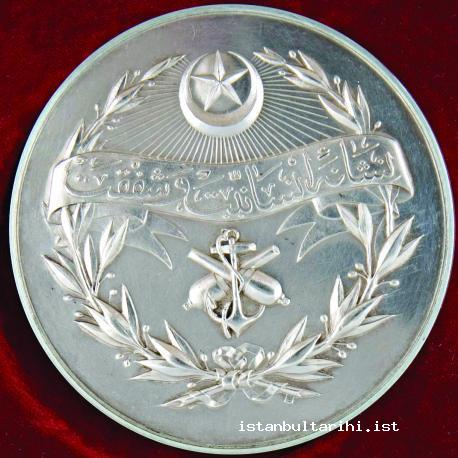
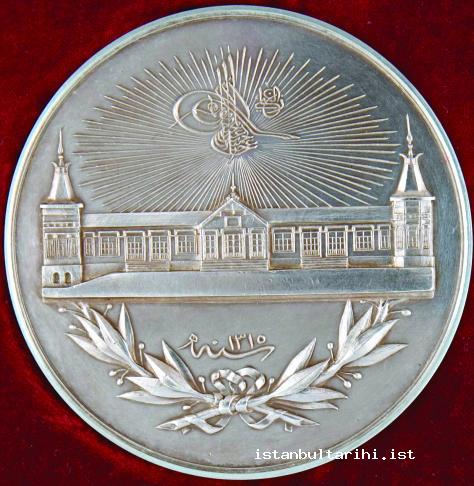
In particular, some of the immigrants who met their food and shelter needs in Istanbul worked in the textile sector. One of the sheds set up in Beyazıt was used as a workshop for women and girls; here socks were woven and sewing-embroidery work was done, that is, standard women’s work, thus making the women productive. This type of workshops which were open to work in were known as darüssına’a. Orphan girls and widows worked in the darüssına’a that was opened by the Hilal-i Ahmer Cemiyeti after the Balkan Wars; they were also taught how to read and write here. Different employment opportunities were created for men. In the darüssına’a which was opened in Eyüp for boat-making, immigration boys sold the goods they produced, and the income they made was used as the capital for the business that they later opened. Some immigrants made rush mats for flooring in the places they lived. Some agricultural areas in primarily Beykoz, Yeşilköy, Kemerburgaz and Suyolu Nahiyesi were set aside for immigrants.
Widows: Societies and Darüssına’as
After the declaration of the Tanzimat, the status of women in society and the matter of the family was examined not only in literary works, but also in newspapers and magazines. However, after some time in Istanbul, with the help of education given in newly opened schools, the productive and intellectual model of the woman appeared alongside that of the classic housewife; this model had until this time been relatively unknown in the community. This group of intellectual women, which was a minority in Istanbul, over time demanded a different status in social life, and this began to be expressed openly in woman’s magazines. At the beginning, these demands occurred individually, but by means of societies, such demands became organized. The number of the earliest examples of societies which aimed to help women increased after the Balkan Wars. Societies that included the Dul Kadın ve Yetimlere İmdat Cemiyeti (Society for the Assistance of Widows and Orphans) were interested only in the problems of women and orphans. Dul Kadın ve Yetimlere İmdat Cemiyeti provided job opportunities to certain women, while certain children were adopted by trustworthy families.
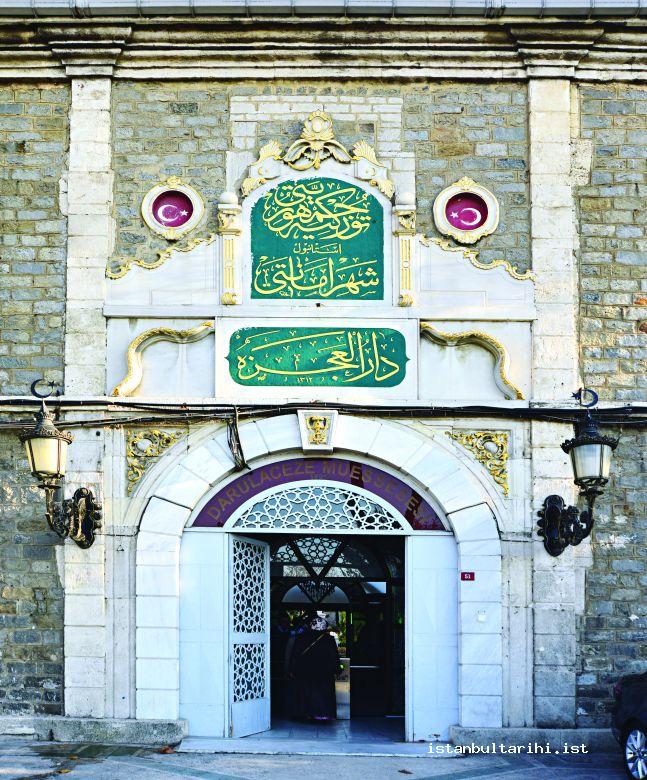
Some of the woman’s societies which opened immediately after the proclamation of the Second Meşrutiyet and in which widows generally worked established darüssına’as which carried out sewing and embroidery work. From March 1913 until 1922, the Osmanlı Türk Hanımları Esirgeme Cemiyeti (Society for the Protection of Ottoman Turkish Ladies) helped 110 families which had previously had no social insurance, taught crafts to girls from the families of martyrs and migrants, and opened a factory in Istanbul for handicraft work. The intention was to sew better quality and more attractive goods than those that were purchased for exorbitant prices from abroad, goods that were more in keeping with the zevk-i milliye (national taste). In 1914, this aim was achieved with the Şefkat Pazarı (compassion market), which was established in Şişli Etfal Hospital; this Pazar was similar to so-called “bake sales” today. The Biçki Yurt (sewing dormitory), identified with Behire Hakkı Hanım, was geared towards similar objectives, such as creating competition for the non-Muslim women who held a monopoly on clothing. One of the darüssına’a in Istanbul was opened by the Hilal-i Ahmer following the Balkan Wars. Here, both the women’s needs for nutrition were met and those who were illiterate were taught how to read and write. The problem of caring for working women’s children was even considered and in 1920 the Himaye-i Etfal Cemiyeti (Society for the Protection of Children) wanted to establish a so-called bakım yurtları, similar to crèches today. However, due to a lack of resources, these centers could not be opened.
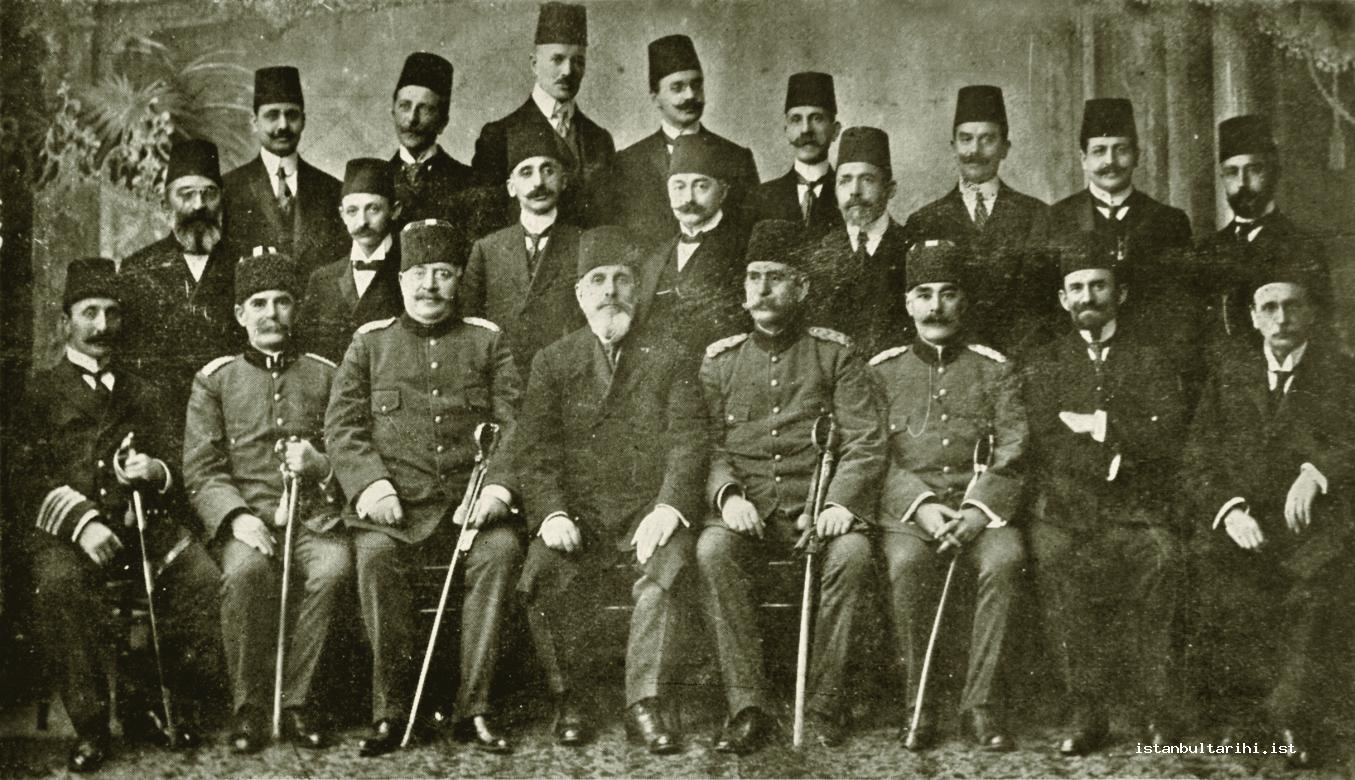
Women in Istanbul who were entitled to receive the eramil (widow’s) pension, which had been part of the seamlessly functioning of the Ottoman pension system since the beginning of the 20th century, began to suffer due to delays in payments. Even though it was constantly emphasized that the amount of the pension was low, those entitled to it in Istanbul were fortunate compared to those in other provinces of the country. The necessary explanations about the matter of payments made from five cashier’s offices in 1914 and ten in 1922 was made in the newspapers. During the years of the First World War, the rents of some of those who received the eramil pensions were paid by the Asker Ailelerine Yardim Cemiyeti (Soldiers’ Families Aid Society), which was under the patronage of the wife of Enver Pasha, Naciye Sultan. In April 1916, this society wanted the people from the families living in Kadıköy who had been identified as being in need to come in front of the Kadıköy Municipality in order to receive their payments.
The Hilal-i Ahmer Cemiyeti and Social Welfare
The most active social welfare society was the Hilal-i Ahmer (Red Cerscent) and this society completed its development over time, becoming a sort of social welfare unit of the state due to the successive wars. The activities of the society covered a wide range, including war and peacetime activities, ensuring public health both at the front and behind the lines, combating epidemics and helping the poor and victims of disasters. In order to get the support of Istanbul residents, quality shows were put on, the like of which had not been seen before that time; in addition, relief campaigns were organized, thus making women more active in the public sphere. In addition to working in the darüssına’as, women were educated in nursing schools and then were sent to treat the wounded soldiers at the front as volunteers. In addition to its activities in Istanbul, the Hilal-i Ahmer was successful in reaching the poor in the remotest corners of Anatolia.
The Hilal-i Ahmer offices that opened in 1919 in Fatih, Üsküdar and Cağaloğlu, where the poor were treated for free, and medications were distributed for free from the dispensaries, can be considered to fall within the scope of Istanbul public health works.
The most remarkable of the three dispensaries was the Cağaloğlu Fukara Muayenehanesi (poor house); due to the distance of Haydarpaşa Hospital, many patients could not go there; in addition, due to the low number of patients medical students were unable to carry out practical learning; these factors were also effective in the establishment of this institution. Specialized physicians in this area would work in the dispensary, providing services except on Fridays and Sundays, and carrying out small operations to the extent that conditions allowed. However, these three dispensaries were shut down in 1921 due to financial difficulties.
Hilal-i Ahmer Aşhaneleri (Kitchens)
The aşhanes that were opened in Istanbul by the Hilal-i Ahmer Cemiyeti in Istanbul were classified into two groups: permanent and temporary kitchens. Permanent kitchens were established in Istanbul’s poor neighborhoods in the spring of 1917 but were closed on January 31, 1921. Temporary kitchens, usually set up in the aftermath of a fire, would be opened in order to meet the provisional needs of disaster victims, and would be closed when life returned to normal. It was felt that these kitchens were a necessary part of the imaret system. The imarets that were closed in 1911 were reestablished in 1914 in Fatih, Şehzade, Nuruosmaniye and Valide-i Atik; however, as these offered services only to students they remained far from having the capability of meeting the needs of the poor. This is where the aile matbah (family kitchens), the name of which is not known today, came to the rescue. According to information obtained from period newspapers, from October of 1916 50,000 people would be fed in the aile matbah that had been opened by the İttihat and Terakki Cemiyet. The first aile matbah was opened in Kadıköy. The aile matbah, appearing to be a continuation of the traditional imaret, constituted an example of the structuring and implementation of the Hilal-i Ahmer aşevs.
The Hilal-i Ahmer Cemiyeti opened its first kitchen in Topkapı, with the Üsküdar, Kasımpaşa, Eyüp, Hekimoğlu Ali Paşa and Fatih Nişanca kitchens following. According to the information attained from local representatives and elders, those who were to receive food were determined, and these people would be given vouchers. The food that was distributed was of a sufficient amount to cover both lunch and dinner. Aşevs were a rare blessing in Istanbul at that time, where everything had become an item in the black market; now people could at least get a hot bowl of food. Furthermore, no room was left for unfair implementation, as it was known who received how much food during the distribution.
In the spring of 1917 the aşevs that had been established were closed down one by one with the end of the First World War; the priority was now the care and feeding of the immigrants. However, taking into account what would happen to the destitute, those without income and the homeless, rather than a sudden abolition, a slow process of closure was considered appropriate. Finally, the first step was taken with the closure of the Kasımpaşa Aşhanesi; the activities in the others came to an end after January 31, 1921.
Fukaraperver Cemiyets (Charitable Societies)
It is necessary to mention the fukaraperver cemiyets, which were established after the proclamation of the Second Meşrutiyet, and which increased in number during the Mütareke Period; these were an important part of the social aid societies that were established to care for the poor of Istanbul without differentiation according to religion or sect. These societies enabled a complete local solidarity from which the poor could be helped, and the local headman/representative played an important role in this.
The oldest foundation was the Topkapı branch of the Osmanlı Fukaraperver Cemiyet-i Hayriyesi, which still exists today as the Topkapı Fukaraperver Cemiyeti. A booklet dated 1917, printed for promotional purposes, described the principle objective as: “helping those who have been exposed to spiritual and material disaster, and who have no family.” This objective developed into meeting the needs of orphans, including their education, helping families in which the head of the household had been lost, providing a doctor for those without means or money and referring the homeless sick to hospitals, as well as finding employment and health-related benefits, and distributing bread to the poor. The number of patients treated by the charity each month was published in the newspapers. According to the records for the month of October 1920, of the 94 patients who were examined, 81 were given medicine, 3 were admitted to the hospital; 140 people were provided with school supplies and 5 poor children were sent to school.1
Another notable fukaraperver cemiyeti, the name of which would later be changed to the Istanbul Fukaraperver Cemiyeti, was established on October 20, 1919; this was established with a youth initiative as the Aksaray Fukaraperver Cemiyeti. The target group was inhabitants of Aksaray who had become impoverished, due to a number of reasons, including in particular fires and immigration. The society received support from local guilds, helping those who had had a “social position” before the war, but who had lost their former status after the war. Those who were identified included victims of fire who were staying in the mosques in the Aksaray area; 1,381 people were given bread at reduced prices and the necessary food provisions. In addition, the children of the families were helped and jobs were found for women who were unemployed. Working from the fact that the health of poor people was important, doctors were sent to the homes of some patients. This active society started up the Hasköy İmarethanesi and distributed food to the poor.
In addition to these societies, we should mention the Kadıköy Fukaraperver Cemiyeti, the Boğaziçi Fakir Çocukları Himaye Cemiyeti, the Beykoz Himaye-i Fukara Cemiyeti, the Kasımpaşa the Osmanlı Fukaraperver Müessese-i Hayriyesi, the Feriköy-Şişli Cemiyet-i Hayriye-i İslamiyesi, the Fatih Fakirleri Himaye Cemiyeti and the Eyüp Sultan ve Civarı Fukaraperver Cemiyet-i Hayriyesi.
CONCLUSION
It is known that there was a protective social system in the Ottoman State, which was completed by traditional social aid institutions and a philanthropic approach in particular waqfs. In general, we can evaluate these structures as non-governmental organizations, but after the proclamation of the Tanzimat they lost their former functions. This change within the system led to greater influence of the central state in the area of social aid.
The radical changes that were experienced not only brought Istanbul to the fore, but also the first and significant implementations which were realized with the new understanding were witnessed here. A modern foundation like the Darülaceze was opened in Istanbul and tried to rehabilitate the beggars of Istanbul. Those that fell under the title of vagrant from rural origin were sent from the city. The first darüleytams that were established in Istanbul formed examples for their Anatolian counterparts. In 1918 with the abolition of provincial darüleytams, thousands of children were moved to Istanbul; in the initial period these children experienced adjustment problems to living in Istanbul.
Following the proclamation of the Second Meşrutiyet, the large number of societies that were established in Istanbul differed in terms of scope and quality from those in all the other Anatolian cities. To start with the fukaraperver cemiyets, via all the social aid societies that existed and with the support of the local representatives, managed to reach the poor in the remotest corners of Istanbul. Among those people were many migrants, refugees, widows, Istanbul military families, orphaned children and elderly.
After the proclamation of the Second Meşrutiyet, the experience gained through the activities of official and voluntary organizations strengthened the accumulation of the remaining social welfare foundations. Taking into account the conditions of Istanbul’s occupation and the thousands of people in need of housing aid, organized social aid was established and this structure was extended to cover the entire country.
BIBLIOGRAPHY
Criss, Bilge, İşgal Altında İstanbul 1918-1923, Istanbul: İletişim Yayinlari, 2000.
Çapa, Mesut, “Kızılay (Hilâl-i Ahmer) Cemiyeti (1914-1925)” (PhD thesis), Ankara University, 1989.
Duben, Alen and Cem Behar, İstanbul Haneleri: Evlilik, Aile ve Doğurganlık 1880-1940, Istanbul: İletişim Yayınları, 1998.
Halaçoğlu, Ahmet, Balkan Harbi Sırasında Türk Göçleri (1912-1913), Ankara: Türk Tarih Kurumu, 1994.
Karal Akgün, Seçil and Murat Uluğtekin, Hilal-i Ahmer’den Kızılay’a, Ankara: Kızılay, 2002.
Karpat, Kemâl, Osmanlı Nüfusu (1830-1914) Demografik ve Sosyal Özellikleri, tr. Bahar Tırnakçı, Istanbul: Tarih Vakfı Yurt Yayınları, 2003.
Kıranlar, Safiye, “Savaş Yıllarında Türkiye’de Sosyal Yardım Faaliyetleri (1914-1923)” (PhD thesis), Istanbul University, 2005.
Özbek, Nadir, Osmanlı İmparatorluğu’nda Sosyal Devlet, Siyaset İktidar ve Meşruiyet 1876-1914, Istanbul: İletişim Yayınları, 2002.
Özbek, Nadir, “Osmanlı İmparatorluğu’nda ‘Sosyal Yardım’ Uygulamaları: 1839-1918”, Toplum ve Bilim, 2000, no. 83, pp. 111-131.
Öztürk, Nazif, Türk Yenileşme Tarihi Çerçevesinde Vakıf Müessesesi, Ankara: Türkiye Diyanet Vakfı, 1995.
Yıldırım, Nuran, İstanbul Darülaceze Müessesesi Tarihi, Istanbul: Darülaceze Vakfı, 1996.
FOOTNOTE
1 In May of 2000, the National Olympic Committee awarded the Topkapı Fukaraperver Cemiyeti was awarded the Fair Play Prize for their services.
